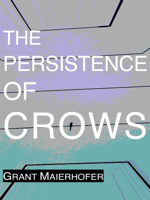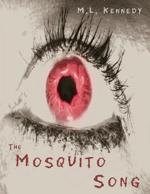About once every two years, I’m introduced to new board games.
That means something other than Scrabble and Othello, which sit most prominently on the bookshelf. Their conspicuous location is a result of having won the majority of my heart.
In a drawer somewhere else sleeps one of those multi-game briefcases with games of lesser importance in my heart. These include chess, checkers, parcheesi, snakes & ladders, and maybe something else.
In addition to these,
I’ve played the usual rounds of Trivial Pursuit. Monopoly. Risk. Battleship. Master mind. And Scene-It? I’m sure there are others, like Operation, but I can’t recall all of them.
That aside, once every two years I somehow fall ass backwards into board game night, where there is always new board games.
I love when this happens. Through no premeditation, through no thirst for
mental challenge, through no effort or desire of my own, my static mind is forced into thinking in different ways. New forms of thought.
New ways of thinking. That in itself is a challenge.
I’m a man of habit. My world is a world of habit. Not routine, but habit. This means I do the same things over and over at different times in the day, week, month, year. The same things. Rarely does a new activity get added. It’s not outside of the question,
a new activity. It does happen, and when it does I’m always grateful.
Board game night
consisted of three games. The only one I feel like writing about is Blokus. A game that involves abstract 3D thought.
Something I apparently have very little of, abstract 3D thought. This doesn’t surprise me actually because I remember having trouble on standardized tests in school when it came to abstract 3D thought.
You know, the questions that make you think three-dimensionally. For some reason, that third dimension always gets me. A fourth dimension is unimaginable.
I’ve had people explain the fourth dimension to me. I take them aside,
these people who have abstract 3D & 4D thought down pat,
and I ask them every question I can think of about the fourth dimension using just my three-dimensional brain.
Still, the fourth dimension is inconceivable.
But Blokus isn’t even about the fourth dimension.
3D is the extent of Blokus, and, as it turns out, that’s more than enough for me.
In all,
I played five games. 2 two-player games and 3 four-player games. I lost all five. Came in dead last.
I make no excuses. Truth be told, my brain hurt during gameplay.
Blokus overheated that jagged part of brain matter used for abstract 3D thought. It didn’t hurt. It just felt like a serious workout.
But the game is full of love. Even bathed in defeat, I could feel the love in this game. It has something to do with the lack of a theme, the gridded board, and brightly colored tetris-like shapes, and the fact that there is no random chance.
Blokus is pure abstract thought from beginning to end. It grows in intensity.
Bernard Tavitian, an engineer and artist, designed it. A French company released it in 2000.
Here’s what Wikipedia says you must keep in mind during gameplay:
- Smaller tiles are useful during the later stages of the game: the smaller a piece is, the better it is at occupying holes between the tiles of other colors.
- It is usually advisable to use up the 5-square tiles early on, because they are difficult to place as the board fills up and have the greatest impact on one’s final score.
- Typically, games begin with players moving quickly toward the board’s centre using the larger pieces (Z5, W5, F5, L5, N5, T5, X5, and V5), and attempting to establish as many usable corners as possible.
- When placing pieces next to an opponent’s pieces, there are three possibilities: to “hang” (block off one of their corners, but thus leaving your own corner exposed to retaliation), “kiss” (exactly meet at the corners, which provides guaranteed passage for yourself but also for your opponent) or “short” (fall short of the space you wish to move to next turn; this only works if your opponent cannot block the next move).
- Establishing “eyes” (small hemmed-in spaces of one, two or three cells) is important: other players cannot move into them without wasting valuable small tiles.
- “Jagged” spaces with lots of corners are more defensible (because they can be easily turned into eyes) than rectangular spaces, which allow opponents to hug the walls and lay down larger pieces.
- Pieces with long sides (3, 4 or 5 squares) must be deployed carefully, as the sides both block your own future moves and offer opponents safe passage.
Games like this, games that move with the times, make me realize how outdated I’m becoming. A direct consequence of being a creature of habit. Just something to keep in mind.








